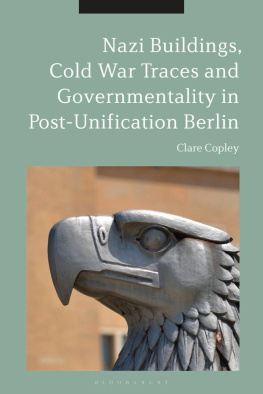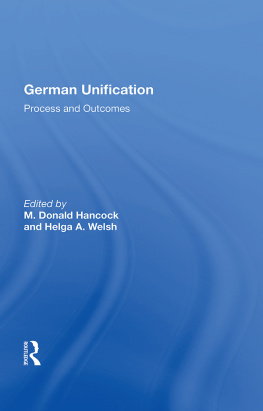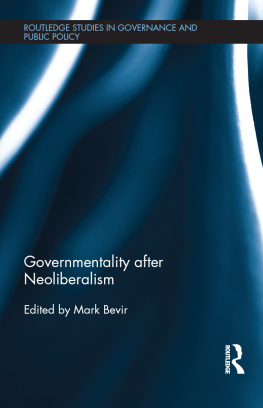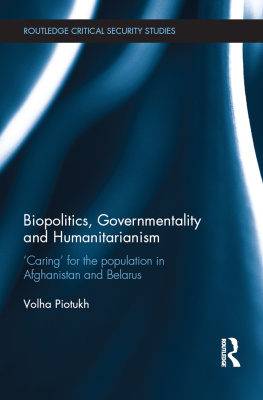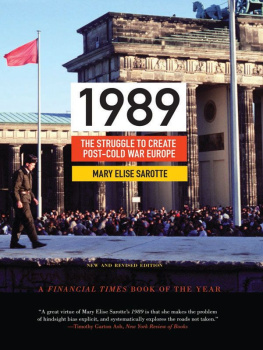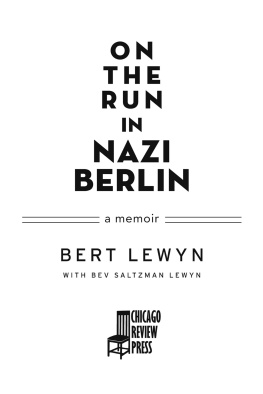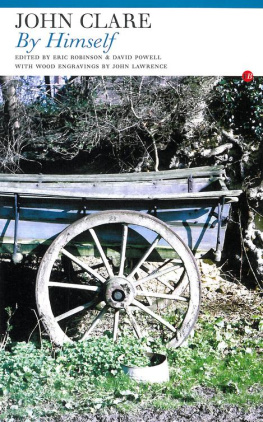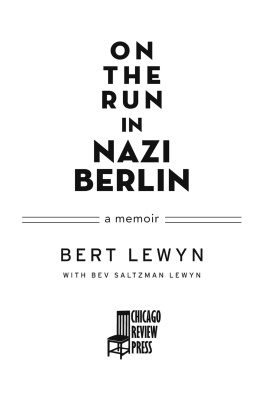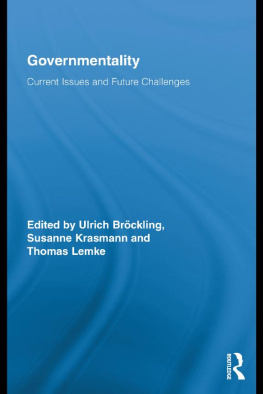Clare Copley - Nazi Buildings, Cold War Traces and Governmentality in Post-Unification Berlin
Here you can read online Clare Copley - Nazi Buildings, Cold War Traces and Governmentality in Post-Unification Berlin full text of the book (entire story) in english for free. Download pdf and epub, get meaning, cover and reviews about this ebook. year: 2020, publisher: Bloomsbury Academic, genre: Religion. Description of the work, (preface) as well as reviews are available. Best literature library LitArk.com created for fans of good reading and offers a wide selection of genres:
Romance novel
Science fiction
Adventure
Detective
Science
History
Home and family
Prose
Art
Politics
Computer
Non-fiction
Religion
Business
Children
Humor
Choose a favorite category and find really read worthwhile books. Enjoy immersion in the world of imagination, feel the emotions of the characters or learn something new for yourself, make an fascinating discovery.
- Book:Nazi Buildings, Cold War Traces and Governmentality in Post-Unification Berlin
- Author:
- Publisher:Bloomsbury Academic
- Genre:
- Year:2020
- Rating:5 / 5
- Favourites:Add to favourites
- Your mark:
- 100
- 1
- 2
- 3
- 4
- 5
Nazi Buildings, Cold War Traces and Governmentality in Post-Unification Berlin: summary, description and annotation
We offer to read an annotation, description, summary or preface (depends on what the author of the book "Nazi Buildings, Cold War Traces and Governmentality in Post-Unification Berlin" wrote himself). If you haven't found the necessary information about the book — write in the comments, we will try to find it.
Clare Copley: author's other books
Who wrote Nazi Buildings, Cold War Traces and Governmentality in Post-Unification Berlin? Find out the surname, the name of the author of the book and a list of all author's works by series.
Nazi Buildings, Cold War Traces and Governmentality in Post-Unification Berlin — read online for free the complete book (whole text) full work
Below is the text of the book, divided by pages. System saving the place of the last page read, allows you to conveniently read the book "Nazi Buildings, Cold War Traces and Governmentality in Post-Unification Berlin" online for free, without having to search again every time where you left off. Put a bookmark, and you can go to the page where you finished reading at any time.
Font size:
Interval:
Bookmark:

Main entrance to the German Federal Finance Ministry |
Construction of a colossus |
The re-emergence of the Wehrmacht |
Socialist realism? |
Challenges to original aesthetics |
Rppels memorial and Lingners mural. |
The memorial to Harro Schulze-Boysen. |
The view down Niederkirchnerstrae |
Challenging the buildings totalitarian spirit? The view into the gardens from Wilhelmstrasse. |
Bright colours and activities for children at the Finance Ministrys open door day. |
Berlins Olympic Stadium |
View through the Marathon Gate and back into the stadium |
Karl Albikers The Discus Throwers |
Joseph Wackerles Horse Tamer |
The older plaques at the Marathon Gate |
The newer plaques at the Marathon Gate |
The older southern stelae |
The newer northern stelae |
The structure containing the Langemarck Hall |
Inside the Langemarck Hall memorial |
Part of the exhibition 1909 1936 2006 Historic Site: The Olympic Grounds |
The former Flughafen Tempelhof |
Inside the former Flughafen Tempelhof |
The highly praised technical back of Flughagen Tempelhof |
Eduard Ludwigs Air Lift Memorial |
Georg Steiberts Columbia-Haus Memorial |
Information boards at the site of the Columbia-Haus concentration camp |
Tempelhofer Feld |
Tempelhofer Feld terms of use |
Pioneer projects at Tempelhofer Feld |
Font size:
Interval:
Bookmark:
Similar books «Nazi Buildings, Cold War Traces and Governmentality in Post-Unification Berlin»
Look at similar books to Nazi Buildings, Cold War Traces and Governmentality in Post-Unification Berlin. We have selected literature similar in name and meaning in the hope of providing readers with more options to find new, interesting, not yet read works.
Discussion, reviews of the book Nazi Buildings, Cold War Traces and Governmentality in Post-Unification Berlin and just readers' own opinions. Leave your comments, write what you think about the work, its meaning or the main characters. Specify what exactly you liked and what you didn't like, and why you think so.

